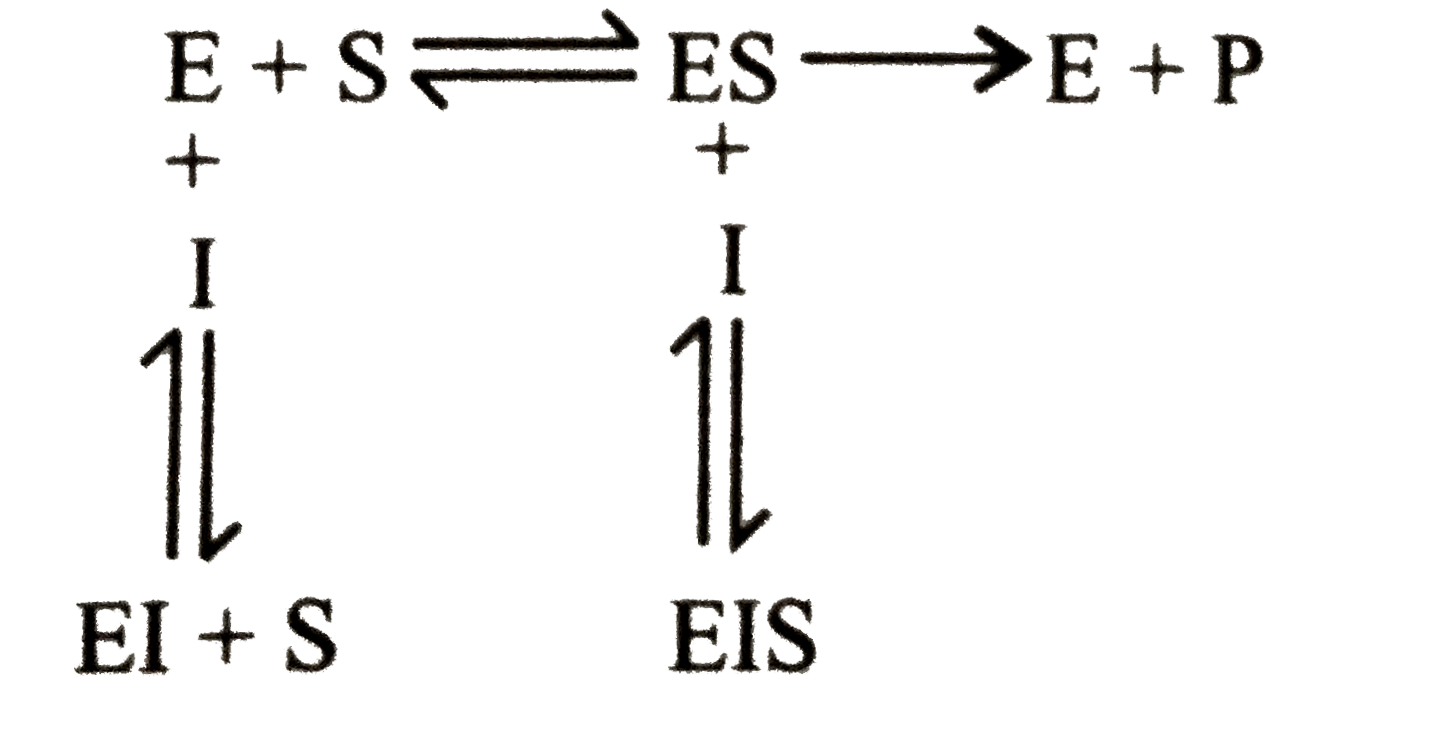The inhibitor which does not resemble the substrate in structure and binds to the enzyme at site other than the active site is called
competitive inhibitor
non-competitive inhibitor
activator
substrate analogue.
The correct Answer is:B
In non-competitve inhibition, the inhibitor binds at a site other than the active site ob the enzyme surface. This binding impairs the enzyme function. The inhibitor has no structural resemblance with the sunstrate. It does not interfere with the enzyme-substrate binding but the catalysis is prevented, possibly due to a distortion in the enzyme conformation. Non-competitive inhibition is usually irreversible because it cannot be overcome by increasing the substrate concentration. The inhibitor (l) generally binds with the enzyme as well as the ES complex. The overall relation in non.competitve inhibition is represented as :

Topper's Solved these Questions
Similar Questions
Knowledge Check
- Question 1 - Select One
The inhibitor which closely resembles the substrate in its molecular structure and inhibits the enzyme activity by biniding to the active site of the enzyme is called
Afeedback inhibitorBnon-competitive inhibitorCcompetitive inhibitorDallosteric modulator. - Question 2 - Select One
Drugs which do not bind to the enzyme's active site, but to different site is called
Ainhibition siteBcompetitive siteCallosteric siteDnone of these - Question 3 - Select One
An enzyme inhibitor when closly resembles the substrate in it's structure and inhibits the activity of enzyme, it is known as :-
ANon competitive inhibitorBCompetitive inhibitorCAllosteric inhibitorDIrreversible inhibitor
A substance unrelated to substrate but capable of reversibly changing activity of enzyme by binding to a site other than active site is called
View SolutionA substance unrelated to substrate reversibly changes the activity of an enzyme. It is
View SolutionBlocking enzyme action through blockking its active sites is
View SolutionSubstrates bind to the active sites of an enzyme by interaction like
View SolutionArrange the steps of catalytic action of an enzyme in order and choose the right option:-
(A) The enzyme releases the products of the reaction and the free enzyme is ready to bind to another molecule of the substrate
(B) The active site of the enzyme, now in close proximity of the substrate breaks the chemical bonds of the substrate and the new enzyme-product complex is formed
(C) The binding of the substrate induces the enzyme to alter its shape, fitting more tightly around the substrate
(D) The substrate binds to the active site of the enzyme, fitting into the active siteView Solution

